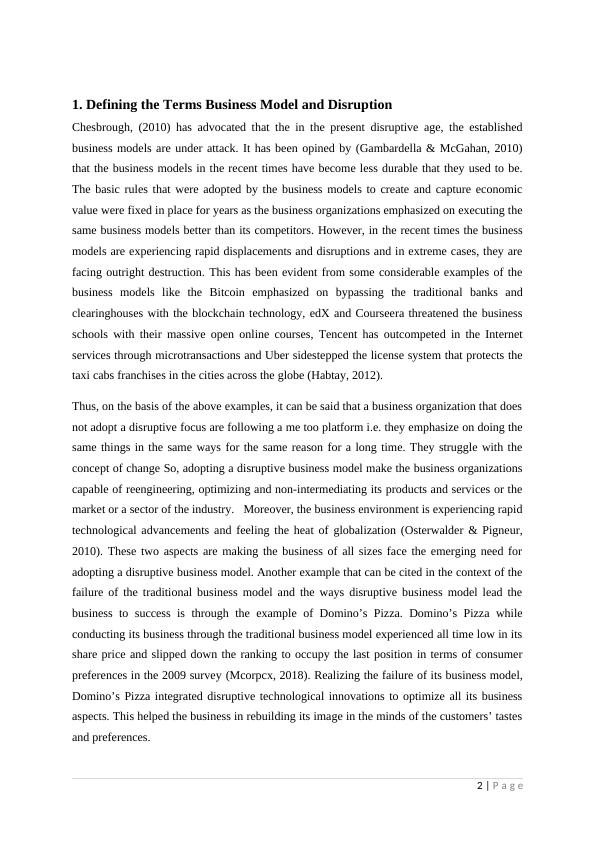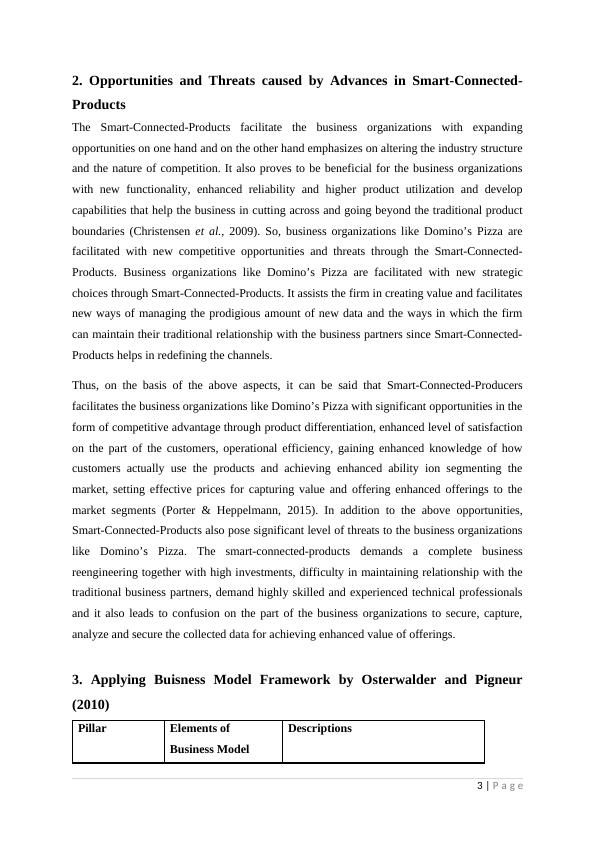Business Model and Disruption in the Age of Smart-Connected-Products
11 Pages2473 Words290 Views
Added on 2023-06-12
About This Document
This article discusses the impact of smart-connected-products on business models and how to apply the Osterwalder and Pigneur framework. It explores the opportunities and threats posed by these products and how to develop resources and capabilities to remain competitive. The article also provides a case study of Domino's Pizza and how it successfully adopted a disruptive business model.
Business Model and Disruption in the Age of Smart-Connected-Products
Added on 2023-06-12
ShareRelated Documents
End of preview
Want to access all the pages? Upload your documents or become a member.
Innovation and Business Model: A Case Study of Dominos Australia
|11
|2517
|55
Innovation and Sustainable Business Development
|7
|582
|302
Innovation and Sustainable Business Development: Impact of Smart Connected Products on Domino's Pizza
|3
|503
|439
Innovation and Sustainable Business Development Sample Assignment
|15
|801
|55
Disruptive Business Models: A Case Study of Dominos Pizza Inc.
|9
|2246
|310
Importance of Business Model and Innovation: A Case Study of Domino's Pizza
|6
|804
|66




